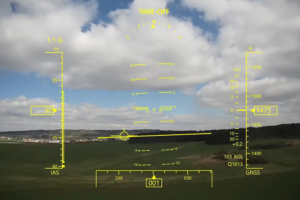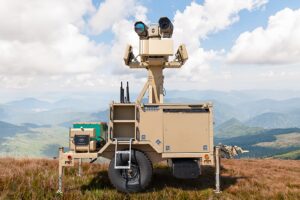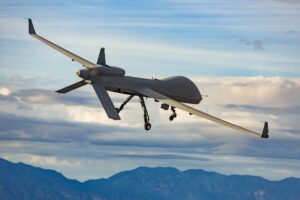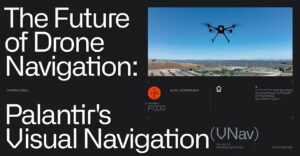Drones have completely changed how power line inspections are done, making the process much safer, faster, and cheaper. Instead of sending people up poles or using expensive helicopters, drones let inspectors stay safely on the ground while capturing clear, detailed images and spotting issues early.
The ultimate guide for using drones for power line inspections
Using drones for power line inspections: not just any drone will do
Using drones for power line inspections might not have the glamor of professional photography, but it’s where some serious money can be made. If you’re aiming for high-paying drone gigs, this is a great option—but purchasing a DJI Mavic Air won’t cut it.
Why? While the Mavic Air has a great camera, power line inspections need much more. You’ll need drones with longer flight times, zoom lenses, thermal imaging, and durability to handle tough conditions. It’s like showing up at a construction site with a selfie stick—not gonna work!
How we made our picks
For power line inspection, we prioritized drones that can carry the right equipment, like high-resolution cameras and thermal sensors. We looked for long flight times to cover more ground without frequent recharging. Strong signal strength was key to avoid interference from power lines, and zoom capabilities were a must for detailed, close-up shots from a safe distance. We also made sure the drones had features to prevent interference and capture clear, stable images in challenging environments.
If you’re in the market for a drone to inspect power lines, we found some of the best drones for power line inspections. Here is a quick breakdown of specs, but we will go in-depth into all of our top picks.
| Drone | Price | Flight Time | Camera Options | Range | Best For |
| Matrice 350 RTK | $12,000+ | 55 minutes | Zenmuse H20T, L1, P1 | 20 km | All-around inspections |
| Matrice 30T | $9,000+ | 41 minutes | Thermal and zoom built-in | 15 km | Thermal imaging inspections |
| Autel EVO 4T | $8,999 | 42 minutes | Thermal, wide-angle, laser rangefinder | 12 km | Non-DJI, geofencing-free option |
Matrice 350 RTK: best overall drone for power line inspections
For all-around power line inspection work, the DJI Matrice 350 RTK, or M350 RTK for short, is hard to beat. It’s built for industrial use, offering long flight times of up to 55 minutes, and it’s loaded with advanced features like RTK positioning, which provides centimeter-level accuracy—crucial for precise inspections. The O3 Enterprise Transmission gives you a 20 km range. That’s critical in covering long stretches of power lines in a single flight.
This is our top recommendation because it supports various mission types and, when paired with DJI Terra, enables efficient high-precision mapping with 2D and 3D digital results. For automated inspections, features like Live Mission Recording and AI Spot-Check streamline repetitive tasks and improve accuracy in repeated shooting.
Its IP rating is IP54 and can operate in temperatures between -20° and 50℃. The ability to handle tough weather conditions makes it a big plus for power line inspections in unpredictable environments.
This is our go-to recommendation if you want a versatile, high-performing drone for large-scale inspections.
The DJI M350 RTK is available for purchase, but pricing is only accessible through approved DJI Enterprise Dealers. TheDroneGirl recommends B&H Photo in the U.S. for its reliable customer service and Aerial Tech in Canada for fast shipping, free demos, and repairs.
Price: $12,000+
Flight time: Up to 55 minutes
Camera options: Zenmuse H20T, L1, P1
Range: 20 km
Matrice 30T: best for thermal imaging
If you need thermal imaging in your inspections, the DJI Matrice 30T is the perfect fit. It offers built-in thermal and zoom cameras, giving you the ability to detect heat anomalies in power lines, which could indicate potential issues like overheating. The thermal camera on the 30T captures detailed heat maps, which are crucial for preventative maintenance.
Compared to the DJI Matrice 350 RTK paired with the Zenmuse H20T, the Matrice 30T is more compact and easier to transport, while still offering advanced features like six-way obstacle sensing and a 41-minute flight time. From a price standpoint, the Matrice 30T is also more affordable for most users, typically costing around $9,000. The Matrice 350 RTK with the Zenmuse H20T costs significantly more when you factor in the added thermal imaging setup, making the 30T a better value for those who need a balance of performance and cost.
For power line inspections where thermal imaging is key, I’d personally recommend the Matrice 30T for its balance of performance and portability.
Similar to the M350 RTK, purchasing a DJI Matrice 30 requires going through a specific DJI Enterprise Dealer like Aerial Tech, Adorama, or B&H Photo. Prices vary by dealer, with added services such as maintenance or training, but you can expect to pay around $9,000 for the Matrice 30.
Price: $8,000+
Thermal resolution: 640×512
Range: 15 km
Autel Evo Max 4T: best non-DJI drone for power line inspections
For those looking to avoid DJI or prefer a non-Chinese drone, the Autel EVO Max 4T is a strong alternative. It comes with a triple camera system featuring thermal imaging, a wide-angle lens, and a laser rangefinder. This makes it ideal for power line inspections that require detailed imagery and heat detection.
One standout feature of the EVO Max 4T is its no geofencing, meaning you won’t have to deal with restricted areas that are common with DJI drones. (This means it can be used in no-fly zones).
The EVO Max 4T is ideal for search and rescue, firefighting, mapping, and inspections. It’s designed to counter GPS jammers and other tech that interferes with drones. Privacy is a key feature, with all user and flight data stored locally, not in the cloud. It also supports AES-256 encryption for added security on photos, videos, and flight logs.
It’s also slightly more affordable than DJI’s higher-end models, which makes it an appealing option if you’re looking for solid performance at a lower price point. You can purchase the EVO Max 4T directly from Autel’s website.
Price: $8,999
Flight time: Up to 42 minutes
Camera options: Thermal, wide-angle, laser rangefinder
Range: 12 km
The post Best drones for power line inspections appeared first on The Drone Girl.













